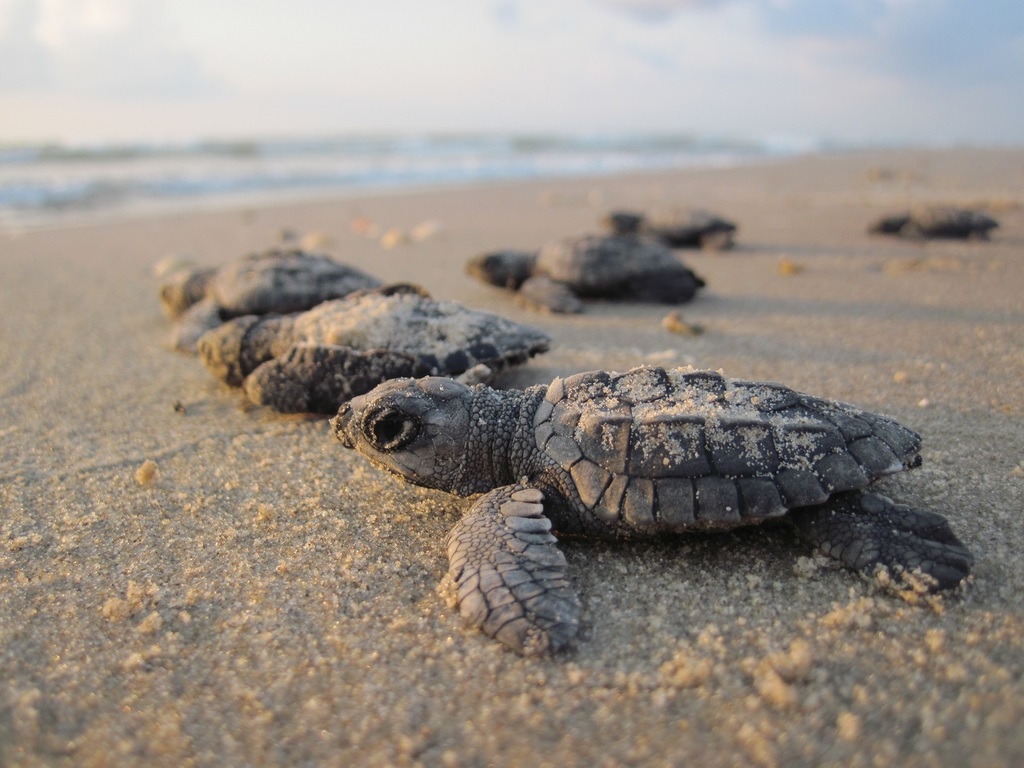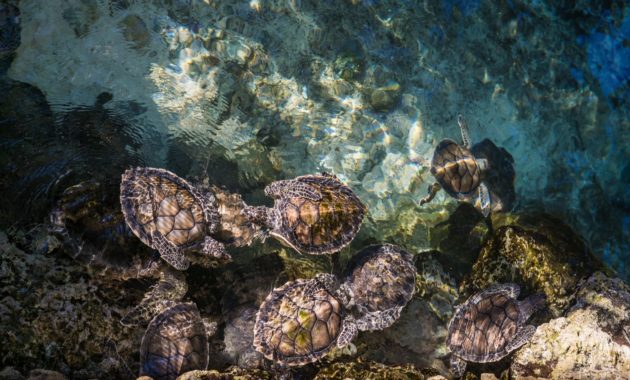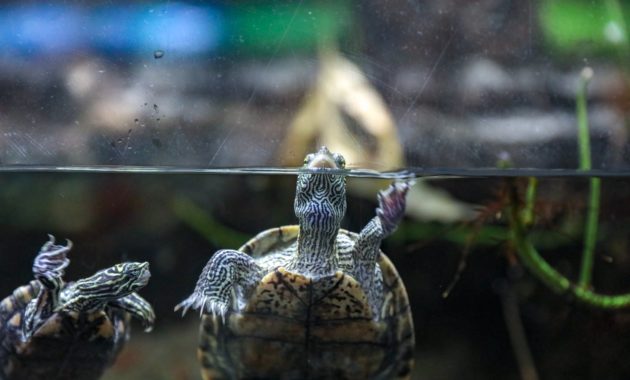
Did you know that the Cumberland Slider, a small turtle native to the southeastern United States, boasts a lifespan of around 30 years?
This seemingly unassuming creature holds a world of intriguing secrets waiting to be discovered. From its unique shell structure to its stunning coloration, there is much to explore and learn about the Cumberland Slider.
But that’s not all! We will also delve into their diet, care requirements, and even uncover the differences between males and females.
So, if you’re ready to uncover the hidden wonders of this southeastern aquatic gem, join us on this captivating journey. Get ready to be amazed!
Key Takeaways
- The Cumberland Slider is a species of turtle native to the southeastern United States, specifically the Cumberland River Valley in Tennessee and Kentucky.
- They have a lifespan of around 30 years and can grow to be 5-8 inches in length.
- Cumberland Sliders have a unique coloration, with olive brown carapaces and yellow markings, making them easily recognizable.
- Males and females can be distinguished by their size, shell shape, and claw length, which is important for conservation efforts and breeding programs.
Size and Lifespan of Cumberland Slider
The Cumberland Slider, a small semi-aquatic turtle, has a length ranging from 5-8 inches and an average lifespan of 30 years. This adorable creature may be small in size, but it makes up for it with its impressive longevity.
With its rounded projections on the shell and slightly keeled appearance, the Cumberland Slider is easily distinguishable. As adults, their carapace becomes oval and wrinkled, while their plastron is smaller and hingeless.
Native to the southeastern part of the United States, this turtle prefers quiet waters with mud at the bottom. It can be found in streams, lakes, and ponds, thriving in environments with aquatic vegetation, basking spots, and organic substrate.
Diet and Care Requirements
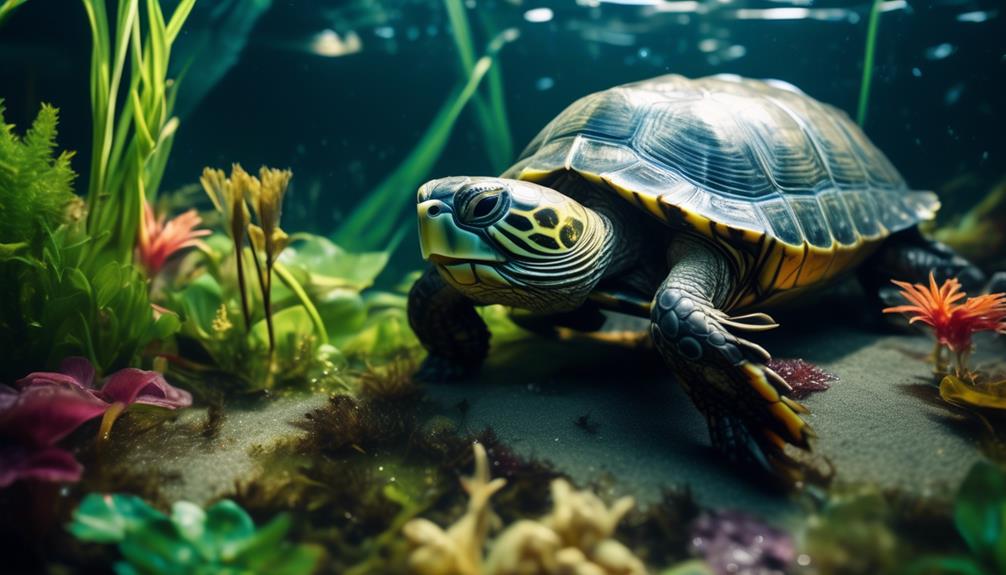
Now let’s explore how to properly care for and feed the Cumberland Slider, ensuring its health and well-being.
As a semi-aquatic turtle, the Cumberland Slider has specific dietary requirements. It mainly feeds on a pelleted commercial diet, insects, and leafy green vegetables. Providing a balanced diet is crucial for its overall health.
In terms of care, the Cumberland Slider requires average maintenance, making it relatively easy to care for. Its care requirements are comparable to those of the Red-Eared Slider Turtle.
It’s important to create a suitable habitat for the Cumberland Slider, which includes aquatic vegetation, basking spots, and organic substrate.
Native Habitat of Cumberland Slider
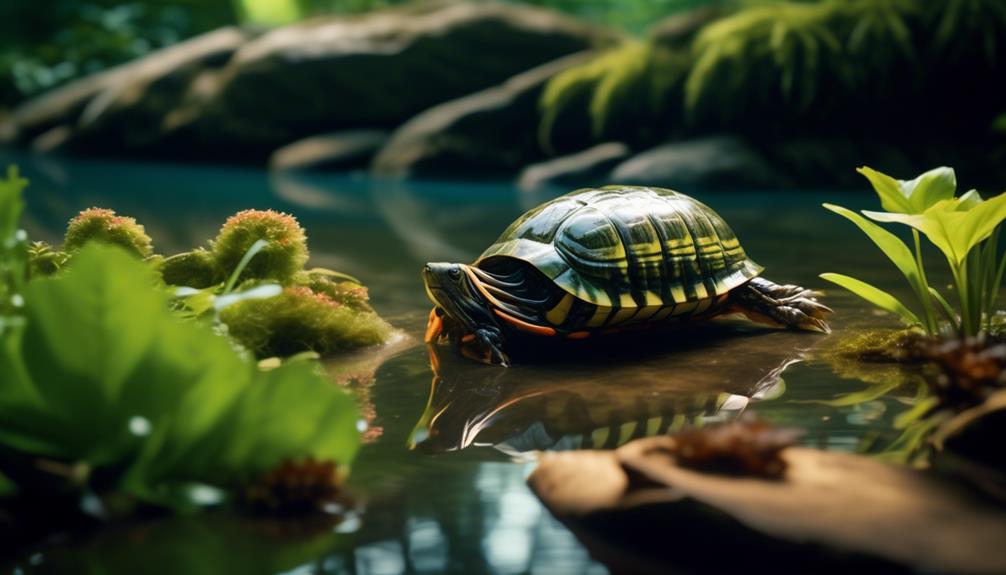
To understand the native habitat of the Cumberland Slider, one must delve into its preference for quiet waters with mud at the bottom. This semi-aquatic turtle thrives in environments with aquatic vegetation, basking spots, and organic substrate. It can be found in streams, lakes, and ponds, particularly in the southeastern part of the United States. Originally native to the Cumberland River Valley in Tennessee and Kentucky, the Cumberland Slider has adapted to various habitats within this region. To give you a better idea of its preferred habitat, here’s a table highlighting its native habitat:
| Native Habitat of Cumberland Slider |
|---|
| Quiet waters |
| Mud at the bottom |
| Streams |
| Lakes |
| Ponds |
| Aquatic vegetation |
| Basking spots |
| Organic substrate |
In these habitats, the Cumberland Slider finds the perfect conditions to thrive and fulfill its ecological role.
Gender Differences in Cumberland Slider

After exploring the preferred habitat of the Cumberland Slider, it’s time to uncover the intriguing gender differences of this aquatic gem.
- Males have long claws on their front legs, which they use for courtship and combat. They also have a smaller size compared to females.
- Females, on the other hand, have a more domed shell, which provides them with extra space for eggs during reproduction.
- These differences in size and shell shape allow researchers to easily distinguish between male and female Cumberland Sliders.
- Understanding these gender differences is important for conservation efforts and breeding programs, as it helps ensure a balanced population and genetic diversity.
Coloration of Cumberland Slider
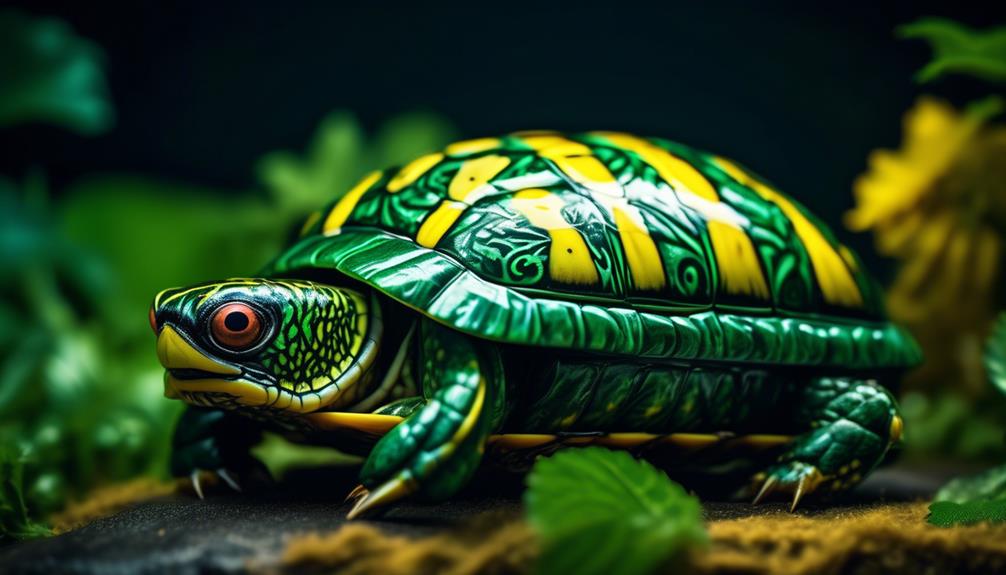
The Cumberland Slider boasts a distinct coloration that sets it apart from other aquatic turtles. As hatchlings, they have a green carapace and yellow plastron. However, as they mature, their coloration changes. Adult Cumberland Sliders have an olive brown carapace with yellow markings, including a yellow bar behind each eye. This unique coloration adds to their beauty and makes them easily recognizable. The combination of the olive brown and yellow creates a striking appearance that is highly sought after by turtle enthusiasts. The table below provides a visual representation of the coloration of the Cumberland Slider.
| Age | Carapace Color | Plastron Color |
|---|---|---|
| Hatchling | Green | Yellow |
| Adult | Olive brown | Yellow |
Frequently Asked Questions
What Is the Preferred Temperature Range for the Habitat of the Cumberland Slider Turtle?
The preferred temperature range for the habitat of the Cumberland Slider turtle is around 75-85 degrees Fahrenheit. This allows them to thrive in their southeastern United States environment, which includes streams, lakes, and ponds.
Are There Any Specific Water Quality Parameters That Need to Be Maintained for the Cumberland Slider Turtle?
To maintain water quality for the Cumberland Slider Turtle, you should ensure clean and filtered water. Regularly monitor pH levels, temperature, and ammonia levels. Providing a proper filtration system and regular water changes is essential for their well-being.
Can Cumberland Slider Turtles Coexist With Other Turtle Species in the Same Habitat?
Cumberland Slider turtles can coexist with other turtle species in the same habitat as long as there is ample space and resources. However, it is important to monitor interactions and ensure that aggression or competition does not harm the turtles.
How Often Should the Diet of the Cumberland Slider Turtle Be Supplemented With Leafy Green Vegetables?
You should supplement the diet of your Cumberland Slider turtle with leafy green vegetables a few times a week. It’s important to provide a balanced diet to ensure their overall health and well-being.
Are There Any Specific Basking Requirements for the Cumberland Slider Turtle in Captivity?
There are specific basking requirements for the Cumberland Slider turtle in captivity. It needs access to basking spots, like rocks or logs, where it can climb out of the water and soak up heat and UVB light.
What Makes Cumberland Sliders and Reeves Turtles Stand Out in the World of Aquatic Turtles?
Cumberland sliders and rare and colorful reeves turtles are unique in the world of aquatic turtles due to their vibrant shells and captivating patterns. These turtles stand out for their stunning appearances, making them highly sought after by turtle enthusiasts. Their distinctive looks set them apart from other aquatic turtle species.
Conclusion
In conclusion, the Cumberland Slider is a fascinating and beautiful aquatic turtle native to the southeastern United States. With its small size and unique shell structure, it’s a captivating creature to observe.
Its long lifespan and specific care requirements make it a great companion for turtle enthusiasts. Exploring its diet, habitat, gender differences, and stunning coloration adds to the allure of this southeastern gem.
Dive into the world of the Cumberland Slider and discover the wonders it holds!

